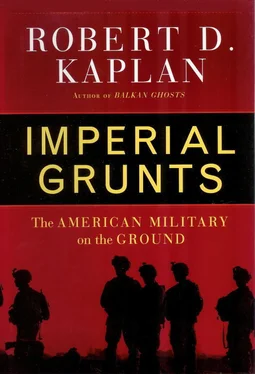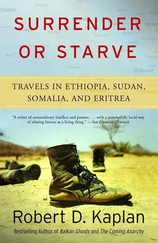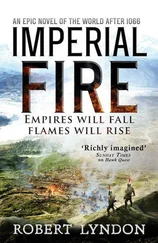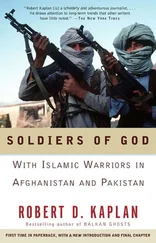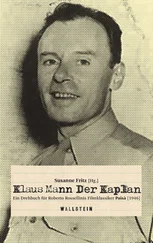Imperialism is but a form of isolationism, in which the demand for absolute, undefiled security at home leads one to conquer the world, and in the process to become subject to all the world’s anxieties. 3That is why empires arise at the fringes of consciousness, half in denial. By the time an imperial reality becomes truly manifest, it is a sign that the apex of empire is at hand, with a gradual retreat more likely than fresh conquests.
It is the revealed fact of empire itself that spurs those outside it to join forces in opposition. Rome never consciously thought that it was building an empire until it already had one, and had already reached the limits of its expansion in the Near East, under Trajan in the early second century. 4British imperialism in India reached its highest level of self-consciousness at the turn of the twentieth century, just as the British Empire was becoming impractical. 5
Empires are works in progress, with necessity rather than glory the instigator of each outward push. The Venetian conquest of Dalmatia in 1000 began as an expedition against pirates, just as Venice’s later conquest of the Morea, the Cyclades, and the Dodecanese in Greece was a defensive measure against a Turkish advance from the west. The British acquired Bermuda in 1684 to guard a stretch of the Atlantic. They took Trincomalee in Ceylon in 1795 to help guard India, and the Yemeni port of Aden in 1839 to have a coaling station for their ships en route to India through the Suez Canal.
The American Empire progressed likewise. “As both a dream and a fact the American Empire was born before the United States,” writes Bernard De Voto, the lyrical historian of westward expansion. 6Following their initial settlement, and before their incorporation as states in the Union, the western territories were nothing less than imperial possessions of Washington, D.C.
The embryonic nation that hugged the eastern seaboard of North America had found it intolerable that the guns of European powers should be at its rear: the French in the Mississippi Valley, the Spanish in the Southwest, the British in Canada and the Northwest. But it was not inevitable that the United States should have an empire in the western part of the continent. That destiny was brought by small groups of frontiersmen, separated from each other by great distances, making alliances with some Indian tribes and buying the neutrality of others. It was they who “provided just enough weight to turn and keep the balance American,” writes De Voto. The result, he goes on, was an imperialist drama in “delicate equipoises, constantly oscillating.” 7He might have been describing the American military deployments of the early twenty-first century as I experienced them, for while the entire planet was a battle space for the American military, I would learn that the fewer troops that policed it the better. Small light and lethal units of soldiers and marines, skilled in guerrilla warfare and attuned to the local environment in the way of the nineteenth-century Apaches, could accomplish more than dinosauric, industrial age infantry divisions. 8
Despite the building of the Panama Canal—one of those rare, conscious feats of empire building, accomplished by President Theodore Roosevelt—it was also not inevitable that America should have become a preeminent global power. What would the United States have become without Adolf Hitler and Hideki Tojo? It was those dictators, and the men around them, who forced the U.S. out of its self-imposed isolation in order to meet the security threat posed by Nazism and Japanese militarism. The unintended consequences of successfully meeting those challenges included the encampment of the Soviet Red Army in the heart of Europe and a civil war in China that brought a communist regime to power: new threats which led to further American imperial expansion.
Four decades later, the victory over communism, like the victories over the Nazis and Japanese, led to more unintended consequences. Breaking the will of the Soviet Union in Afghanistan in the 1980s meant the arming of radical Islamic guerrillas, who subsequently turned against the great power that had helped sustain them: the United States. Henceforth, Islamic terrorism became the sharp edge of a seeping anarchy that followed in the wake of the collapse of the Soviet empire in Eurasia, and of the decomposition of states created by European empires on other continents.
Since antiquity the collapse of empires has been a messy business, and the most benign antidote to the chaos unleashed has been the birth of new imperial domains. Consequently, the turn of the twenty-first century found the United States with bases and base rights in fifty-nine countries and overseas territories, with troops on deployments from Greenland to Nigeria, and from Norway to Singapore, all this while defense appropriations amounted to only 3.3 percent of America’s gross domestic product—compared to 9.4 percent during the Vietnam War and 14.1 percent during the Korean War. 9
Even before the terrorist attacks on the World Trade Center and the Pentagon on September 11, 2001, the U.S. Army’s Special Operations Command was conducting operations in 170 countries per year, with an average of nine “quiet professionals” on each mission. [2] The term “quiet professionals” was coined by Army Special Forces commander Maj. Gen. Leroy Suddath in the 1980s.
America’s reach was long; its involvement in the obscurest states protean. Rather than the mass conscript army of citizen soldiers that fought World War II, there was now a professional military that, true to other imperial forces throughout history, enjoyed the soldiering life for its own sake. 10
———
For many of those professional troops the twenty-first century looked strikingly similar to the middle and latter half of the nineteenth, when volunteer cavalry and dragoons subdued a panoply of mobile guerrilla forces, composed of different North American Indian tribes, operating throughout the new American empire west of the Mississippi River. [3] For a nostalgic firsthand account of Indian operations on the Great Plains between the Mexican and Civil wars, see Percival G. Lowe’s Five Years a Dragoon ( ’49 to ’54 ) (1906; reprint, Norman: University of Oklahoma Press, 1965).
Whereas the average American at the dawn of the new millennium found patriotic inspiration in the legacies of the Civil War and World War II, when the evils of slavery and fascism were confronted and vanquished, for many commissioned and noncommissioned officers the U.S. Army’s defining moment was fighting the “Indians.”
The legacy of the Indian wars was palpable in the numerous military bases spread across the South, the Middle West, and particularly the Great Plains: that vast desert and steppe comprising the Army’s historical “heartland,” punctuated by such storied outposts as Forts Hays, Kearney, Leavenworth, Riley, and Sill. 11Leavenworth, where the Oregon and Santa Fe trails separated, was now the home of the Army’s Command and General Staff College; Riley, the base of George Armstrong Custer’s 7th Cavalry, now that of the 1st Infantry Division; and Sill, where Geronimo lived out the last years of his life, the headquarters of the U.S. Artillery. 12
The range of Indian groups, numbering in the hundreds, that the cavalry and dragoons had to confront was no less varied than that of the warring ethnic and religious militias spread throughout Eurasia, Africa, and South America in the early twenty-first century. It included Pawnees in Nebraska; Arapahos in eastern Colorado; Cheyennes and Aricaras in South Dakota; Crows, Blackfeet, Flatheads, Snakes, and Cayuses in the Northwest; Utes in Colorado and Utah; Comanches, Apaches, Hopis, and Navahos in the Southwest; Shoshones and Paiutes everywhere from southern California into Oregon, Idaho, and Wyoming. The word “tribe” itself was an oversimplification: the Teton Dakota, or Sioux, as they were
Читать дальше
